Revista de revistas
![]()
PUBLICACIONES DE INVESTIGADORES DEL INS EN REVISTAS INDIZADAS
Noviembre
REVISTAS INTERNACIONALES
1. Alvarez E, Lavis JN, Brouwers M, Carmona Clavijo Gloria1, Sewankambo N, Solari Lely1, Schwartz L. Developing evidence briefs for policy: a qualitative case study comparing the process of using a guidance-contextualization workbook in Peru and Uganda. Health Res Policy Sys 17, 89 (2019) doi:10.1186/s12961-019-0488-0. Available from:
https://health-policy-systems.biomedcentral.com/articles/10.1186/s12961-019-0488-0.
ABSTRACT
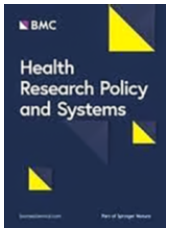
Background. Translating research evidence from global guidance into policy can help strengthen health systems. A workbook was developed to support the contextualization of the WHO’s ‘Optimizing health worker roles to improve maternal and newborn health’ (OptimizeMNH) guidance. This study evaluated the use of the workbook for the development of evidence briefs in two countries — Peru and Uganda. Findings surrounding contextual factors, steps in the process and evaluation of the workbook are presented. Methods. A qualitative embedded case study was used. The case was the process of using the workbook to support the contextualization of global health systems guidance, with local evidence, to develop evidence briefs. Criterion sampling was used to select the countries, participants for interviews and documents included in the study. A template-organizing style and constant comparison were used for data analysis. Results. A total of 19 participant-observation sessions and 8 interviews were conducted, and 50 documents were reviewed. Contextual factors, including the cadres, or groups, of health workers available in each country, the way the problem and its causes were framed, potential policy options to address the problem, and implementation considerations for these policy options, varied substantially between Peru and Uganda. However, many similarities were found in the process of using the workbook. Overall, the workbook was viewed positively and participants in both countries would use it again for other topics. Conclusions. Organizations that produce global guidance, such as WHO, need to consider institutionalizing the application of the workbook into their guidance development processes to help users at the national/subnational level create actionable and context-relevant policies. Feedback mechanisms also need to be established so that the evidence briefs and health policies arising from global guidance are tracked and the findings coming out of such guideline contextualization processes can be taken into consideration during future guidance development and research priority-setting.
Keywords: Comparative; Evidence brief; Context; Knowledge translation;Health systems strengthening; Qualitative case study; Maternal and newborn health
2. Ramos W, Luna M, Alarcon T, Jimenez G, Diaz J, Calderon M, Gutierrez Ericson1. Cutaneous Manifestations of Zika in Peru. JOURNAL OF CUTANEOUS MEDICINE AND SURGERY 2019, Número de artículo: UNSP 1203475419878160.
DOI: 10.1177/1203475419878160. In Press. Available from: https://journals.sagepub.com/doi/abs/10.1177/1203475419878160?journalCode=cmsa
ABSTRACT
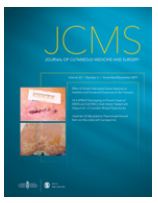
This article aims to describe the cutaneous manifestations observed in the Zika epidemic in Peru during 2016 and 2017, as well as discuss the potential differential diagnoses. During the outbreak, the main reason for seeking medical advice was the development of a pruriginous maculopapular rash with a marked papular component, which started on the chest and later generalized to the rest of the body. Similar manifestations were noted in adults, children, and pregnant women. Other manifestations such as conjunctivitis, edema, or petechiae on the palate were rare. We suggest that in areas that are endemic for arboviral infections, in the differential diagnosis of a rash one must consider infections such as dengue, Zika, or chikungunya viruses. In nonendemic areas, the diagnosis is more difficult, as the rash may result from other viral infections not transmitted by arthropods and/or reactive or inflammatory diseases (urticaria, atopic dermatitis, systemic lupus erythematosus). We recommend that primary care health personnel are trained in the recognition of the mucocutaneous lesions caused by Zika virus infection, which could contribute to the identification of suspicious cases, particularly pregnant women.
Keywords: Zika virus infection; arboviruses; skin rash; Peru
3. Lope Priscila2, Huaringa Maribel2, Egma M, Bailon Henri3, Padilla Carlos3. Characterization of influenza A(H1N1) pdm09 isolates of Peru using HRM, a post PCR molecular biology method. BIOINFORMATION 2019, 15(9): 640-644.
DOI: 10.6026/97320630015640. Available from: https://www.bioinformation.net/015/97320630015640.pdf
ABSTRACT

Influenza caused by A(H1N1)pdm09 is a public health issue with severe conditions in vulnerable populations leading to death. Therefore, it is of interest to characterize and monitor influenza A(H1N1)pdm09 genotypes using High Resolution Melting (HRM), a post PCR molecular biology method. We used HRM analysis (using RotorGene Q thermocycler) to characterize A(H1N1)pdm09 genotypes from several places of Peru. RNA was purified from nasal and pharyngeal swab samples referred to LRNVR-INS, synthesized cDNA, and then the hemagglutinin gene and matrix fragment were amplified. Thus, 287 samples positive for influenza A(H1N1) pdm09 were identified across Peru where places like Lima, Piura, and Arequipa documented highest number of cases. The HRM data was analyzed and results showed different profiles which were further grouped into four genotypes for the HA (A, B, C, D) and 3 for the M (a, b, c) genes. We also report ten genotypes (I-X) of virus using combined HA (hemagglutinin) and M gene profiles representing a national geography. The prevalent genotypes are I and II with a frequency of 35.89% (103) and 29.27% (84), respectively linking with severe acute respiratory infection.
Keywords: High Resolution Melting, H1N1 Influenza Virus Subtype A, Genotype
4. Rizzo MF, Osikowicz L, Cáceres Abraham German4, LunaCaipo VD, Suarez-Puyen SM, Bai Y, Kosoy M, Sucari-Idrogo A. Identification of Bartonella rochalimae in Guinea Pigs (Cavia porcellus) and Fleas Collected from Rural Peruvian Households. Am J Trop Med Hyg. 2019 101(6): 1276–1281 doi: 10.4269/ajtmh.19-0517 Disponible en: http://www.ajtmh.org/docserver/fulltext/14761645/101/6/tpmd190517.pdf?expires=1578949886&id=id&accname=guest&checksum=426411D58B51EFA7C1575037181A8CE7
ABSTRACT
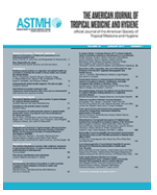
In the present study, we tested 391 fleas collected from guinea pigs (Cavia porcellus) (241 Pulex species,110 Ctenocephalides felis, and 40 Tiamastus cavicola) and 194 fleas collected from human bedding and clothing (142 Pulex species, 43 C. felis, five T. cavicola, and four Ctenocephalides canis) for the presence of Bartonella DNA. We also tested 83 blood spots collected on Flinders Technology Associates (FTA) cards from guinea pigs inhabiting 338 Peruvian households. Bartonella DNA was detected in 81 (20.7%) of 391 guinea pig fleas, in five (2.6%) of 194 human fleas, and in 16 (19.3%) of 83 guinea pig blood spots. Among identified Bartonella species, B. rochalimae was the most prevalent in fleas (89.5%) and the only species found in the blood spots from guinea pigs. Other Bartonella species detected in fleas included B. henselae (3.5%), B. clarridgeiae (2.3%), and an undescribed Bartonella species (4.7%). Our results demonstrated a high prevalence of zoonotic B. rochalimae in households in rural areas where the research was conducted and suggested a potential role of guinea pigs as a reservoir of this bacterium.
Keywords: Bartonella rochalimae, Guinea Pigs, Perú.
5. Ferreira Cordeiro1, Maria R, Shiguer F. Influence of nutrition on peripubertal heifer mammary growth. ARCHIVOS LATINOAMERICANOS DE NUTRICION. 69(2): 75-80. Disponible en: http://apps.webofknowledge.com/full_record.do?product=WOS&search_mode=GeneralSearch&qid=1&SID=7FVrzlhlzJggjmNfIVt&page=1&doc=1
ABSTRACT
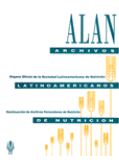
Nutrition is an important factor that influences peripubertal heifer mammary growth. Dairy producers, to lower the age at first calving and the period of nonproductive life of their
replacement animals, often maintain replacement heifers on high-gain diets (BW gains >700 g/d) during the prepubertal period.
Keywords: Body-weight, dietary.
Diciembre
REVISTAS INTERNACIONALES
1. Cabello-Vílchez AM, Chura-Araujo MA, Anicama Lima WE, Vela C, Asencio AY, García H, Del Carmen Garaycochea María1, Náquira C, Rojas E, Martínez DY. Fatal granulomatous amoebic encephalitis due to free-living amoebae in two boys in two different hospitals in Lima, Perú. Neuropathology. 2019 Nov 22. doi: 10.1111/neup.12617. Available from:
https://onlinelibrary.wiley.com/doi/abs/10.1111/neup.12617
ABSTRACT
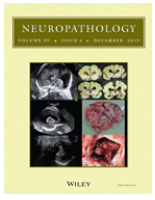
Objective. To compare the performance of polymerase chain reaction (PCR) and enzyme-linked immunosorbent assay (ELISA) tests for diagnosing Echinococcus granulosus in dog feces among national reference laboratories in Argentina, Chile, Peru, and Uruguay. Methods. National laboratories affiliated with the Ministry of Health/Agriculture of each country exchanged panels of 10 positive/negative samples obtained from their regular national surveillance programs in November 2015 – November 2016. All laboratories applied PCR; two also applied ELISA techniques. Sensitivity and specificity were determined for each laboratory and concordance of results among the laboratories was evaluated by Cohen Kappa coefficient. Results. Poor concordance (3 of 10 paired comparisons had values of Kappa > 0.4), low sensitivity and specificity across all laboratories, and poor performance of both techniques in detecting E. granulosus in canine feces was demonstrated in this study. An ex-post comparison of the laboratories’ test protocols showed substantial heterogeneity that could partially explain poor concordance of results. Conclusion. The results underscore the heterogeneity of canine echinococcosis diagnosis across the region and indicate possible sources of variability. Efforts to standardize canine echinococcosis testing must be included in the plan of action for the Regional Initiative for the Control of Cystic Echinococcosis. Future comparisons with fecal samples of known parasite load are needed.
Keywords: Echinococcosis, dog diseases, laboratory proficiency testing, South America.2. Jercic MI, Santillan G, Elola S, Quispe Paredes William1, Conza Blanco LB, Morel N, Villegas R, Molina Flores B, Gavidia CM, Cabrera M, Dos Santos AG, Sanchez-Vazquez MJ, Maxwell MJ, Vigilato MA, Larrieu E, Del Rio Vilas VJ. First inter-laboratory comparison of Echinococcus granulosus sensu lato diagnosis in Latin America. Rev Panam Salud Publica. 2019 Dec 9;43:e89. doi: 10.26633/RPSP.2019.89 Available from: https://www.ncbi.nlm.nih.gov/pmc/articles/PMC6898979/pdf/rpsp-43-e89.pdf
ABSTRACT
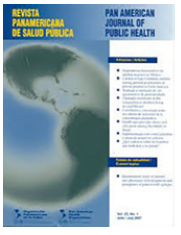
Objective. To compare the performance of polymerase chain reaction (PCR) and enzyme-linked immunosorbent assay (ELISA) tests for diagnosing Echinococcus granulosus in dog feces among national reference laboratories in Argentina, Chile, Peru, and Uruguay. Methods. National laboratories affiliated with the Ministry of Health/Agriculture of each country exchanged panels of 10 positive/negative samples obtained from their regular national surveillance programs in November 2015 – November 2016. All laboratories applied PCR; two also applied ELISA techniques. Sensitivity and specificity were determined for each laboratory and concordance of results among the laboratories was evaluated by Cohen Kappa coefficient. Results. Poor concordance (3 of 10 paired comparisons had values of Kappa > 0.4), low sensitivity and specificity across all laboratories, and poor performance of both techniques in detecting E. granulosus in canine feces was demonstrated in this study. An ex-post comparison of the laboratories’ test protocols showed substantial heterogeneity that could partially explain poor concordance of results. Conclusion. The results underscore the heterogeneity of canine echinococcosis diagnosis across the region and indicate possible sources of variability. Efforts to standardize canine echinococcosis testing must be included in the plan of action for the Regional Initiative for the Control of Cystic Echinococcosis. Future comparisons with fecal samples of known parasite load are needed.
Keywords: Echinococcosis, dog diseases, laboratory proficiency testing, South America.
3. Hernández-Vásquez Akram5, Burstein Zuño5. Promoción de la salud oral y perspectivas para el 2020 de la Revista Peruana de Medicina Experimental y Salud Pública. Rev Peru Med Exp Salud Publica. 2019;36(4):551-2. doi: 10.17843/rpmesp.2019.364.4982. Disponible en: https://rpmesp.ins.gob.pe/index.php/rpmesp/article/view/4982/3444
4. Pardo-Aldave K, Pareja-Vásquez M, Guillen A, Ureta-Tapia Juan Manuel1. Actividad antimicrobiana in vitro del camu camu (Myrciaria dubia) contra microorganismos orales: una revisión sistemática. Rev Peru Med Exp Salud Publica. 2019;36(4):573-82. doi: 10.17843/rpmesp.2019.364.4270. Disponible en: https://rpmesp.ins.gob.pe/index.php/rpmesp/article/view/4270/3416
REVISTAS NACIONALES
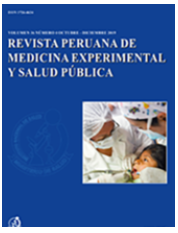
Objetivos. Evaluar la actividad antimicrobiana de la Myrciaria dubia sobre microorganismos orales. Materiales y métodos. Se realizó una revisión sistemática de la literatura siguiendo las recomendaciones PRISMA mediante búsquedas en Pubmed, LILACS, SciELO, ProQuest, EBSCO y Google Scholar, de estudios publicados durante 2008 y 2018. Resultados. Se recopilaron 11 estudios, in vitro, todos los estudios evidenciaron actividad antimicrobiana positiva, principalmente por cada una de las partes de sus frutos, sobre grampositivos. Sin embargo, dicha actividad fue comparada con clorhexidina en solo dos estudios y en otro resultó ser mejor que un antibiótico. Se detectó un alto riesgo de sesgo en la mayoría de estudios. Los compuestos fenólicos incluidos polifenoles y acilfloroglucinoles fueron señalados como los responsables de su actividad. Conclusiones. Existe evidencia sobre la actividad antimicrobiana de M. dubia. Su estudio como antimicrobiano contra microorganismos orales es aún incipiente, pero se advierte un gran potencial debido a los fitoquímicos potentes que posee. Además, se necesita más estudios de calidad, que comparen su actividad versus antisépticos orales y sobre más microorganismos asociados a caries dental y enfermedad periodontal.
Palabras clave: Revisión, Fitoterapia, Myrtaceae, Caries dental, Microbiología, Periodontitis.
5. Vásquez-Uriarte K, Ninatanta Ortiz JA, Romani Franco6, Roque-Henriquez Joel Christian6. Cobertura y factores asociados a la vacunación contra el sarampión en niños de 12 a 59 meses en Perú: estimación basada en la Encuesta Demográfica y de Salud Familiar 2017. Rev Peru Med Exp Salud Publica. 2019;36(4):610-9. doi: 10.17843/rpmesp.2019.360.4456. Disponible en: https://rpmesp.ins.gob.pe/index.php/rpmesp/article/view/4456/3377
RESUMEN

Objetivos. Estimar la cobertura y determinar los factores asociados a la vacunación contra el sarampión en Perú. Materiales y métodos. Realizamos un estudio de fuente secundaria utilizando la Encuesta Demográfica y de Salud. Familiar (ENDES) del 2017, la unidad informante fue una mujer en edad fértil de 15 a 49 años; la unidad de análisis fue un niño de 12 a 59 meses (para la primera dosis) o niño de 18 a 59 meses (para la dosis de refuerzo) y que contaba con datos de vacunación. Los datos de cobertura fueron obtenidos de la tarjeta de vacunación. Resultados. Según la tarjeta de vacunación, la cobertura para la primera dosis fue del 70,2% (IC95%: 68,8-71,6), para la dosis de refuerzo del 52,0% (IC95%: 50,5-53,6). Los niños de 24-35 meses tuvieron más probabilidades de ser vacunados para la primera dosis (OR: 1,59; IC95%: 1,28-1,97) y dosis de refuerzo (OR:2,04; IC95%: 1,62-2,56) comparado con los niños de 12-23 meses y 18-23 meses respectivamente. Los niños cuyo control de crecimiento y desarrollo fue en el sector privado tuvieron menores probabilidades de ser vacunados para la primera dosis (OR: 0,30; IC95%: 0,21-0,43) y dosis de refuerzo (OR:0,26; IC95%: 0,17-0,40) comparado con los que se controlaron en el sector público. Conclusiones. Según la ENDES 2017, Perú y ninguna de sus regiones alcanzó una cobertura del 95,0% para la primera dosis y su refuerzo. El control de crecimiento y desarrollo en establecimientos del sector público está asociado con la vacunación de sarampión en su primera dosis y refuerzo.
Palabras clave: Sarampión, Vacunación, Cobertura de vacunación, Perú.
6. Vigo Aiko1, Solari Lely1, Santos David1, Puyén Zully M1. Mutaciones que confieren resistencia a fármacos antituberculosis de primera línea en Perú: una revisión sistemática de la literatura. Rev Peru Med Exp Salud Publica. 2019;36(4):636-45. doi: 10.17843/rpmesp.2019.364.4722. Disponible en: https://rpmesp.ins.gob.pe/index.php/rpmesp/article/view/4722/3427
RESUMEN

Objetivos. Sistematizar la información disponible referente a las mutaciones que confieren resistencia a los fármacos antituberculosis de primera línea. Materiales y métodos. Se realizó una revisión sistemática de la literatura científica para identificar artículos que reportaron mutaciones que confieren resistencia a fármacos antituberculosis de primera línea. Esta búsqueda hizo énfasis en la resistencia a los fármacos de isoniazida y rifampicina en cepas de M. tuberculosis de pacientes peruanos. La búsqueda fue realizada en PubMed y LILACS (Literatura Latinoamericana y del Caribe en Ciencias de la Salud). Resultados. Se incluyeron 14 artículos de los cuales tres reportaron mutaciones asociadas con resistencia a isoniazida, seis a rifampicina, ocho a pirazinamida y uno a etambutol. Todas las mutaciones a isoniazida o rifampicina fueron identificadas directa o indirectamente mediante la prueba de diagnóstico molecular GenoType MTBDRplus® v2.0. La mayor variabilidad de mutaciones fue determinada en la resistencia a pirazinamida. Conclusiones. Existe una gran variabilidad de mutaciones asociadas con resistencia a fármacos antituberculosis que han sido reportadas en Perú, y se sistematizan en el presente reporte. Estas mutaciones deben de ser tomadas en cuenta para el desarrollo de dispositivos diagnósticos o selección de pruebas diagnósticas a ser aplicadas en nuestro país.
Palabras clave: Mycobacterium tuberculosis, Resistencia a Medicamentos, Genotipo, Mutación.
7. Alarco Jhonnel J5, Arroyo-Hernández Hugo5. Aclaración sobre endogamia editorial en la Revista Peruana de Medicina Experimental y Salud Pública. Rev Peru Med Exp Salud Publica. 2019;36(4):714-5. doi: 10.17843/rpmesp. 2019.364.4980. Disponible en: https://rpmesp.ins.gob.pe/index.php/rpmesp/article/view/4980/3445
8. Gutiérrez-Aguado A, Escobedo-Palza S, Angeles-Donayre M, Gutiérrez-Aguado Martha1. Financiamiento en la capacitación de los profesionales en salud bajo la perspectiva del sector público, 2016-2018. Rev. Fac. Med. Hum. Octubre 2019; 19(4):38-46.DOI 10.25176/RFMH.v19i4.2338. Disponible en: http://www.scielo.org.pe/pdf/rfmh/v19n4/a07v19n4.pdf
RESUMEN
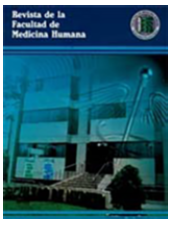
Objetivo: Estimar el financiamiento y costo unitario en la capacitación a largo plazo de los profesionales de salud en el Perú. Métodos: Se realizó una evaluación económica parcial (análisis de costos) desde la perspectiva del financiador público. Para el financiamiento se muestra reportes por categorías presupuestales y programas presupuestales del sector salud, los datos se obtuvieron a través del Sistema Integrado de Administración Financiera del Ministerio de Economía y finanzas (SIAF-MEF) entre los años 2016 – 2018. En relación al análisis de costo se estimó con la metodología de costeo por absorción. Los datos se obtuvieron del Sistema Integrado de gestión Administrativa (SIGA)- modulo logístico para obtener los precios de los insumosy del aplicativo Informático de Recursos Humanos de Servidores Públicos (AIRHSP) para los sueldos de los recursos humanos. Resultados: Financiamiento que hace el país en relación a capacitación se estima en 27 millones de soles para el año 2016, y se reduce a 20 millones de soles para el año 2018. El costo per cápita para diplomados fue de S/.12 661 (USD 3 836) y para la especialización fue de S/. 23 356 (USD 7 077). Conclusión: el financiamiento en la formación del recurso humano en salud es vital para el logro de los objetivos sanitarios en el Perú. Sin embargo existe una disminución del presupuesto destinado a actividades de capacitación en los últimos 3 años.
Palabras clave: Financiación de la formación profesional, Sector público, Capacitación profesional.










